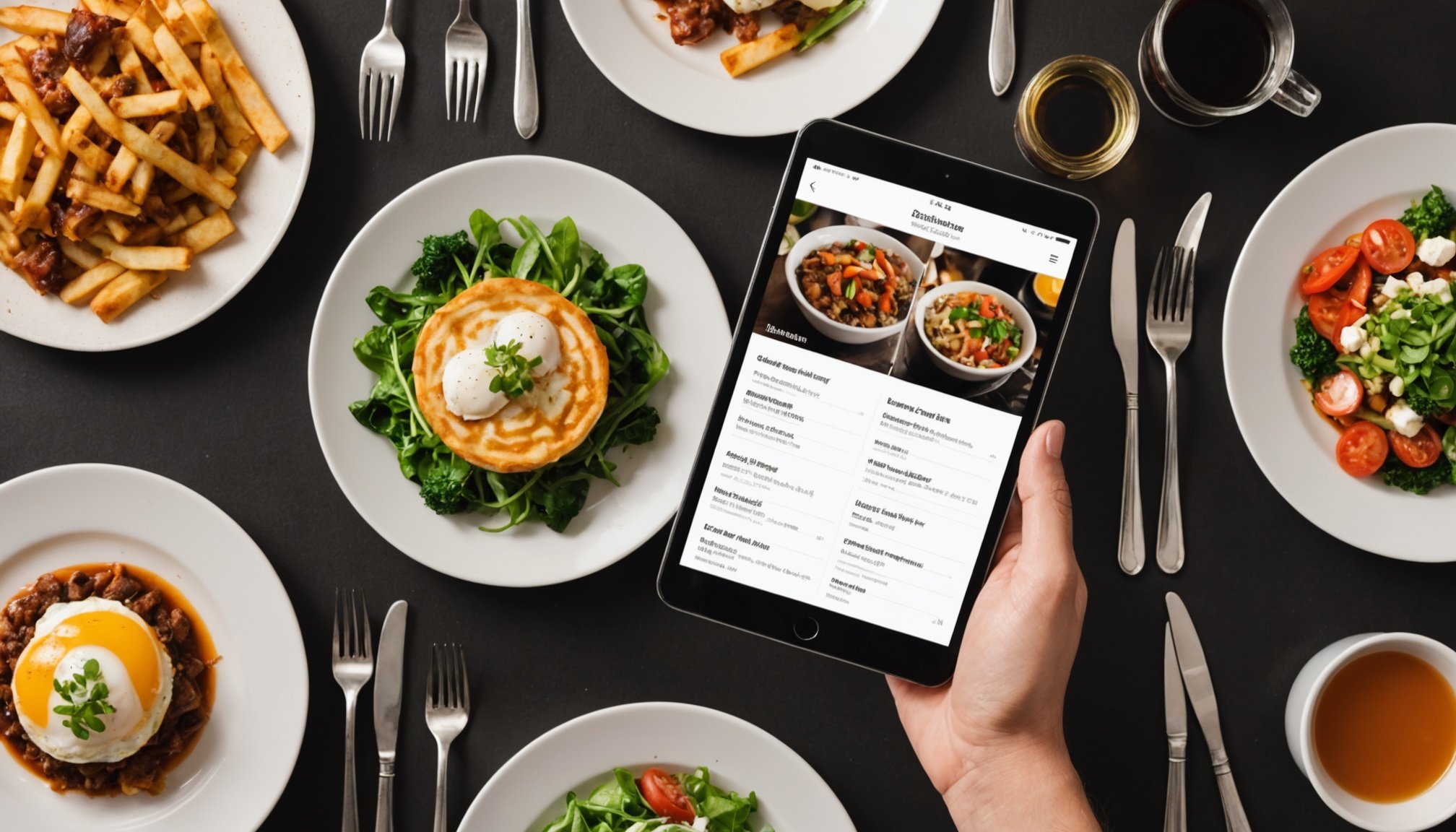Importance of Customer Insights in Dining Experience Enhancement
Understanding customer insights is crucial for improving the dining experience in any restaurant. Feedback from patrons can significantly shape how dining establishments operate and evolve. For instance, customer insights might reveal a demand for healthier menu options or a desire for more sustainable practices. Acting on these insights not only improves the dining experience but also increases customer satisfaction.
Satisfied customers are more likely to return, providing sustained business and a good reputation for the restaurant. This is vital for success in a competitive industry. When the dining experience aligns with customer expectations, it creates loyalty and encourages positive word-of-mouth recommendations.
In the same genre : Building a sustainable tomorrow: innovative approaches for bars to source eco-friendly spirits and wines
Incorporating customer insights can also drive menu innovation. By understanding what customers enjoy or dislike, restaurants can adapt their menus to accommodate these preferences. This continual adaptation and innovation help keep offerings fresh and relevant, ensuring the restaurant remains a preferred choice for diners.
Overall, leveraging customer insights fosters a connection between the restaurant and its patrons, making customers feel heard and valued. This not only enhances the dining experience but also contributes to the longer-term success and growth of the establishment.
Methods for Collecting Customer Insights
The modern business thrives on understanding its customers, and acquiring precise insights is essential. Each method deployed in feedback collection offers unique advantages, ensuring that no piece of the customer puzzle is left unexamined.
Customer Surveys
One of the most effective methods of feedback collection is through customer surveys. These are typically structured to gather both qualitative and quantitative data, enabling businesses to gauge satisfaction levels and dining metrics. Surveys provide a platform for customers to voice their opinions, revealing trends and areas for improvement. Precision in designing these surveys is paramount to ensure that the information collected is both relevant and actionable.
Online Reviews
The use of online reviews has skyrocketed, providing businesses with a constant stream of unsolicited feedback. These reviews, scattered across various platforms, are gold mines for understanding customer sentiments. They offer real-time insights into what customers truly think about products or services, allowing businesses to make informed decisions swiftly.
Focus Groups
Focus groups delve deeper into customer insights by facilitating direct discussions that are rich in qualitative data. These sessions provide a controlled environment to explore customer perceptions, attitudes, and experiences in-depth. By understanding these nuances, companies can refine their offerings to better meet customer needs.
Successful Menu Improvements Through Customer Feedback
Understanding that customer feedback can be a valuable asset in menu development is crucial for restaurant success. Many establishments have thrived by actively listening to their patrons and adapting accordingly.
For instance, a case study involving a popular bistro highlights the power of feedback. Initially hesitant to change, the management decided to overhaul their menu based on direct input from their loyal patrons. This led to the introduction of new dishes which quickly became best-sellers, exemplifying a classic menu development success story. By aligning menu offerings with customer preferences, the bistro witnessed a substantial increase in customer satisfaction and loyalty.
A detailed analysis of thriving menu items indicates a clear trend: dishes that resonate with evolving customer tastes significantly outperform those that don’t. This suggests a direct relationship between the continuous evaluation of customer preferences and the successful adaptation of the menu.
An essential lesson here is the dynamic nature of customer taste evolution. Restaurants that continuously engage with their customers and adapt their menus accordingly, not only keep their offerings fresh and relevant but also cement their status as customers’ favourites. By focusing on customer insight, establishments can ensure their menus remain both innovative and appealing.
Practical Tips for Integrating Customer Feedback
Incorporating feedback integration into a restaurant strategy can lead to actionable changes and improvements. It requires careful planning and execution to truly benefit from customer insights.
Creating a Customer Feedback Loop
A robust feedback loop ensures continuous improvement. Start by consistently encouraging guests to share their experiences through surveys or comment cards. This data collection feeds into actionable changes that align with your restaurant strategy. Regularly review feedback to spot trends or common issues.
Staff Training on Customer Interaction
Staff training is crucial for effective feedback integration. Train your team to engage confidently with customers, encouraging open dialogue and noting concerns. When staff feel empowered to gather insights directly from patrons, they play a pivotal role in enhancing service.
Prioritizing Feedback Based on Business Impact
Not all feedback holds the same weight. Prioritization is key. Categorize input based on relevance to your primary goals. Address feedback that significantly impacts customer satisfaction or operational efficiency first. This targeted approach ensures your efforts lead to substantial, actionable changes.
Tools for Analyzing Customer Feedback
Navigating the world of analytics tools is crucial for effective feedback management. Various software solutions offer unique ways to monitor and interpret customer input, each tailored to different needs. These tools not only capture feedback but also transform it into meaningful insights.
One essential feature of these solutions is data visualization. Imagine diving into a sea of numbers without a map. Data visualization provides that map. Through graphs and charts, it helps identify trends and pinpoint areas for improvement. This analytical perspective is indispensable for refining offerings to better match customer preferences.
Consistently integrating analytics into decision-making processes fosters a culture of data-driven decisions. Feedback management systems track customer sentiments over time, identifying shifts in expectations or satisfaction. This ongoing analysis allows for continual refinement of products or services.
In the restaurant industry, for example, using analytics to refine menus based on customer reviews can enhance the dining experience. By understanding what dishes resonate with diners and which ones don’t, establishments can make informed menu adjustments. This data-driven approach ensures offerings remain relevant and appealing.
In conclusion, these tools enable businesses to harness the power of feedback, ensuring they remain in tune with their customer’s needs and expectations.
Enhancing Overall Dining Experience
Improving the dining experience involves more than just serving delicious food; it encompasses enhancing the restaurant atmosphere and ensuring customer satisfaction is paramount.
Ambiance and Service Enhancements
A well-crafted atmosphere significantly influences how customers perceive their overall dining experience. Elements such as lighting, music, and decor set the tone and contribute to creating a memorable visit. A welcoming ambiance combined with attentive service can elevate the restaurant atmosphere, encouraging patrons to return.
Menu Presentation Techniques
The visual presentation of the menu can greatly impact a customer’s choice and satisfaction. Using eye-catching menu design and creative presentation not only highlights signature dishes but also assists in guiding diners’ decisions. Well-detailed descriptions can stimulate interest and appetite, ensuring a fully engaging dining experience.
Personalizing Dining Experiences
Tailoring the dining experience to individual preferences is crucial in achieving high customer satisfaction. Recognising customer preferences, such as dietary restrictions or favourite seating arrangements, contributes to a personalised service that makes customers feel valued. Implementing strategies like customising meal options or offering special deals enhances the dining experience, building loyalty and fostering a positive relationship between the customer and the restaurant.











